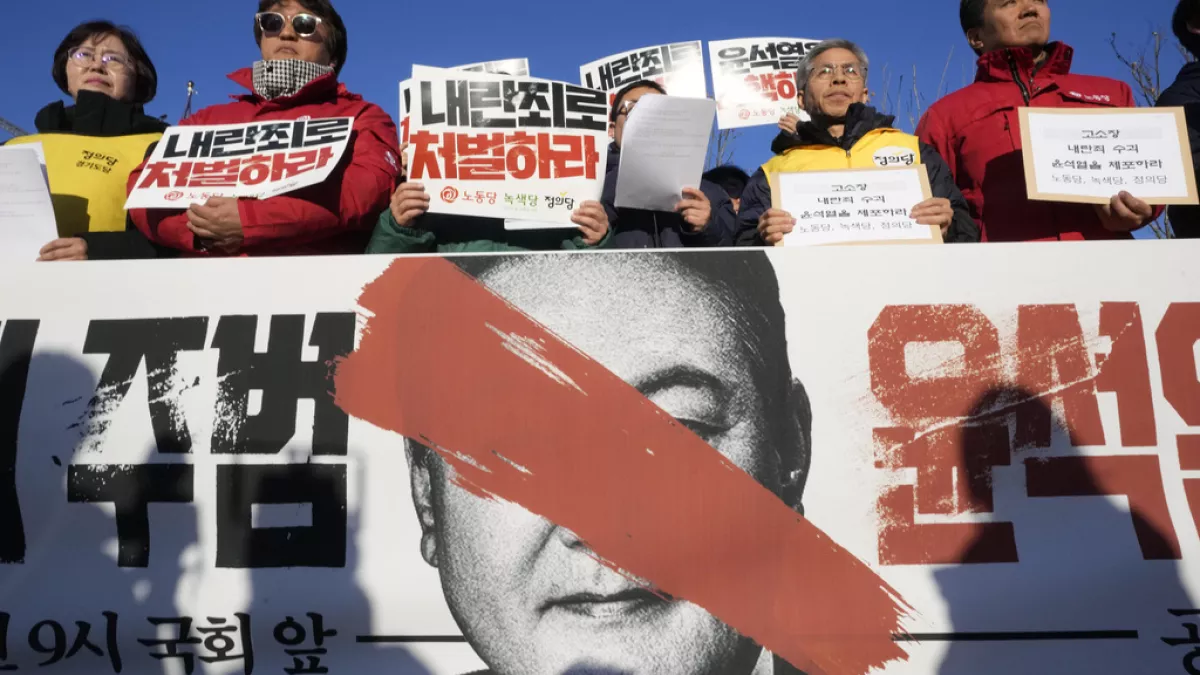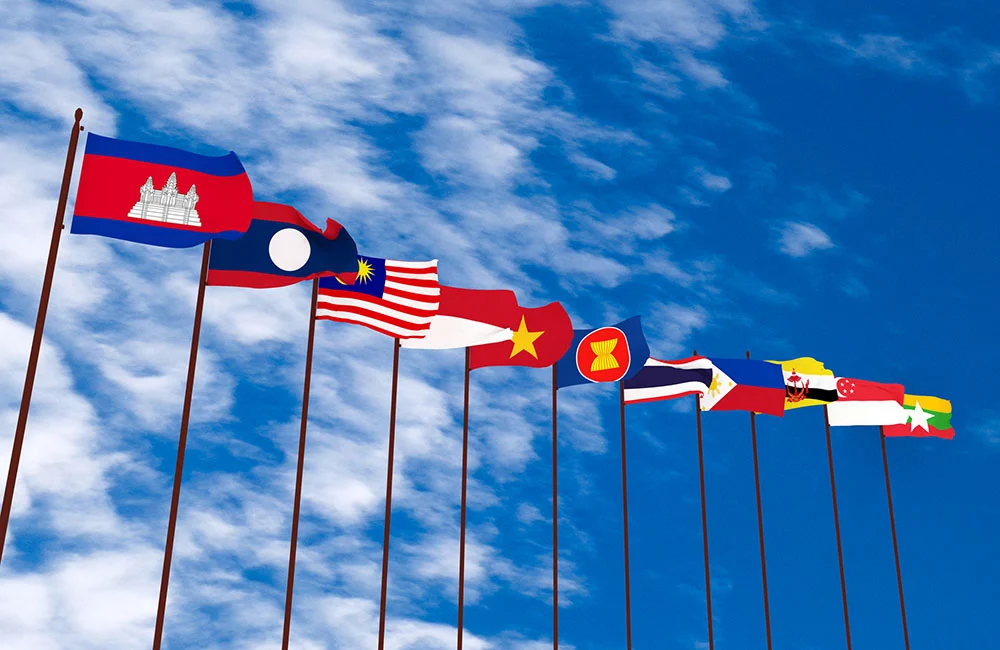On February 4, 2025, President Donald Trump’s administration announced a 10 percent tariff on all imports from China, set to take effect on April 4, 2025.[1] This move rekindled the ongoing economic tensions between the two nations, with the tariffs framed as a consequence of China’s failure to curb the smuggling of fentanyl precursor chemicals into the United States.[2] Trump defended the decision on social media, arguing that it was a necessary step to protect American lives and address a public health crisis exacerbated by China’s inaction.[3]
The decision to impose these tariffs followed a period of intense negotiations and trade conflicts between the U.S. and China. Previous trade wars had already strained the bilateral relationship, with both nations levying tariffs on each other’s products. The U.S. imports a wide range of goods from China, from electronics to textiles, making it one of the largest sources of U.S. imports. On the other hand, China has become less dependent on U.S. trade in recent years, shifting its focus to other global markets like the European Union, Mexico, and Vietnam, as well as ramping up domestic production to reduce reliance on imports.[4]
The announcement of these tariffs escalated the trade standoff that had begun years earlier during Trump’s presidency, which was marked by aggressive measures aimed at reducing the U.S. trade deficit with China and challenging China’s unfair trade practices, including intellectual property theft and forced technology transfers.[5] These efforts were also part of a broader strategy of economic decoupling, aimed at reducing U.S. reliance on Chinese manufacturing.
China swiftly imposed its tariffs on U.S. exports, targeting crucial American industries such as coal, natural gas, and agricultural products.[6] These tariffs—some as high as 15 percent—were seen as an attempt to leverage China’s position as a major trading partner and send a strong message against U.S. economic coercion.[7] Additionally, Beijing filed a complaint with the World Trade Organization, accusing the U.S. of “wrongful practices” and pledging to take necessary actions to protect its rights and interests.[8] This escalated tensions between the two largest economies, further souring diplomatic relations.
The Economic Impact of Trump’s Tariff Measures
Trump’s tariff policies have far-reaching implications, particularly for the United States. Nearly half of U.S. imports—more than $1.3 trillion—come from Canada, China, and Mexico; the new tariffs could reduce overall U.S. imports by 15 percent.[9] Although tariffs may generate an estimated $100 billion in annual revenue, experts warn of broader economic consequences, including supply chain disruptions, raising business costs, and higher consumer prices.[10]
Certain sectors, such as automotive, energy, and food, will face particularly significant impacts. Gas prices could surge, especially in the Midwest, as Canada and Mexico supply a significant portion of crude oil imports to U.S. refineries.[11] Similarly, the automotive sector, reliant on parts imported from Canada and Mexico, could see production costs rise, adding up to $3,000 to the price of cars.[12] The cost of groceries might also increase due to U.S. dependence on Mexico for fresh produce, which accounts for over 60 percent of U.S. vegetable imports.[13]
Despite these challenges, the United States remains less dependent on trade than many other industrialized nations. Imports and exports only make up about 25 percent of U.S. GDP, which cushions the impact of tariffs to some degree.[14]
China’s Response and Trade Diversification
China’s position is more robust, having gradually reduced its reliance on trade over the years. Imports and exports now account for only 37 percent of China’s GDP, compared to more than 60 percent in the early 2000s.[15] The Chinese government has also sought to diversify its trade relationships, increasing economic exchanges with the EU, Mexico, and Vietnam.[16] As a result, China has become less susceptible to the impact of U.S. tariffs. Furthermore, China has leveraged a weakened Yuan to cushion the effects of U.S. tariffs, maintaining the competitiveness of its exports in the global market.[17]
The Trump Administration’s Pressure on Mexico
Adding another layer to the trade conflict, President Trump’s administration is pressuring Mexico to impose its own tariffs on Chinese imports. This move is intended to force Mexico to comply with U.S. demands regarding trade and drug smuggling. Mexico has already taken steps to reduce cheap Chinese imports to bolster its own domestic industries, but it has so far refrained from implementing direct tariffs on Chinese goods.[18] In a recent meeting, U.S. officials, including Commerce Secretary Howard Lutnick and U.S. Trade Representative Jamieson Greer, urged Mexico to take more drastic action to avoid U.S. tariffs.[19] This underscores the integrated web of negotiations between the U.S., Mexico, and China—all influenced by the Trump administration’s “America First” agenda.
Looking Ahead: Economic Fallout and Global Implications
The U.S.-China trade war, exacerbated by Trump’s new tariff measures, presents significant risks not only to the U.S. economy but also to its global trade partners. If the tariff measures escalate, the resulting economic disruptions could trigger broader challenges such as rising inflation, job losses, and reduced economic growth. As countries retaliate, the global economy may experience heightened tensions and protectionist policies. The long-term effects could reshape trade dynamics which influence U.S. businesses, consumers, and global supply chains.
As this ongoing trade conflict develops, the international community will closely monitor the impact of these tariffs on key sectors, economic growth, and diplomatic relations between the U.S. and China, as well as the broader geopolitical consequences of the Trump administration’s “America First” policy.
Alice Quan is a second-year undergraduate student at the University of Toronto, pursuing an Honours Bachelor of Arts in International Relations, Political Science, and East Asian Studies. Her primary research interests include human intelligence, espionage, warfare analysis, and security relations. These interests have driven her to present at conferences such as the Trinity College Undergraduate Research Conference (TCURC) and the Trinity-IID Student Conference on Intelligence and Security. As the lead editor for the East Asian section, Alice aims to provide in-depth analyses of the region’s evolving geopolitical landscape, focusing on military dynamics, national security concerns, and defense strategies.
Bibliography
Bloomberg. “Trump Team Pressures Mexico to Impose Tariffs on China to Avoid US Duties.” South China Morning Post, February 23, 2025. https://www.scmp.com/news/world/united-states-canada/article/3299781/trump-team-pressures-mexico-impose-tariffs-china-avoid-us-duties.
Boak, Josh. “Trump’s Tariffs on Canada, Mexico, China Could Mean Higher Inflation.” AP News, February 2025. https://apnews.com/article/trump-tariffs-trade-china-mexico-canada-inflation-753a09d56cd318f2eb1d2efe3c43b7d4.
Congressional Research Service. “U.S. Petroleum Trade: Crude Oil Imports from Canada and Mexico and Potential Tariffs.” February 3, 2025. https://crsreports.congress.gov/product/pdf/IN/IN12488v.
O’Neil, Shannon, and Julia Huesa. “What Trump’s Trade War Would Mean, in Nine Charts.” Council on Foreign Relations, 2025. https://www.cfr.org/article/what-trumps-trade-war-would-mean-nine-charts.
Sheridan, Mary Beth, and Valentina Muñoz Castillo. “From Beer to Barley: How Trump’s Tariff Threat Could Affect Your Wallet.” Washington Post, December 2, 2024. https://www.washingtonpost.com/world/2024/12/02/mexico-tariffs-beer-avocados-tomatoes-berries/.
Siripurapu, Anshu, and Noah Berman. “The Contentious US-China Trade Relationship.” Council on Foreign Relations, May 14, 2024. https://www.cfr.org/backgrounder/contentious-us-china-trade-relationship.
The Tribune. “On Trump’s Possible New US-China Trade Deal, Beijing Reiterates Tariff Wars Produce No Winners.” The Tribune, 2025. https://www.tribuneindia.com/news/world/on-trumps-possible-new-us-china-trade-deal-beijing-reiterates-tariff-wars-produce-no-winners/.
Zahniser, Steven, Belem Ruiz, and Gregory Astill. “Growth in Mexico’s Horticultural Exports to the United States Continued Even as New U.S. Food Safety Laws Took Effect.” USDA Economic Research Service, 2019. https://www.ers.usda.gov/amber-waves/2024/october/growth-in-mexico-s-horticultural-exports-to-the-united-states-continued-even-as-new-u-s-food-safety-laws-took-effect.
- Shannon O’Neil and Julia Huesa, “What Trump’s Trade War Would Mean, in Nine Charts,” Council on Foreign Relations, 2025, https://www.cfr.org/article/what-trumps-trade-war-would-mean-nine-charts. ↑
- Ibid. ↑
- Josh Boak, “Trump’s Tariffs on Canada, Mexico, China Could Mean Higher Inflation,” AP News, February 2025, https://apnews.com/article/trump-tariffs-trade-china-mexico-canada-inflation-753a09d56cd318f2eb1d2efe3c43b7d4. ↑
- O’Neil, “What Trump’s Trade War Would Mean.” ↑
- Anshu Siripurapu and Noah Berman, “The Contentious US-China Trade Relationship,” Council on Foreign Relations, May 14, 2024, https://www.cfr.org/backgrounder/contentious-us-china-trade-relationship. ↑
- “The Tribune,” The Tribune, 2025, https://www.tribuneindia.com/news/world/on-trumps-possible-new-us-china-trade-deal-beijing-reiterates-tariff-wars-produce-no-winners/. ↑
- Ibid. ↑
- Boak, “Trump’s Tariffs.” ↑
- O’Neil, “What Trump’s Trade War Would Mean.” ↑
- Ibid ↑
- “U.S. Petroleum Trade: Crude Oil Imports from Canada and Mexico and Potential Tariffs,” Congressional Research Service, February 3, 2025, https://crsreports.congress.gov/product/pdf/IN/IN12488v. ↑
- Mary Beth Sheridan and Valentina Muñoz Castillo, “From Beer to Barley: How Trump’s Tariff Threat Could Affect Your Wallet,” Washington Post (The Washington Post, December 2, 2024), https://www.washingtonpost.com/world/2024/12/02/mexico-tariffs-beer-avocados-tomatoes-berries/. ↑
- Steven Zahniser, Belem Ruiz, and Gregory Astill, “Growth in Mexico’s Horticultural Exports to the United States Continued Even as New U.S. Food Safety Laws Took Effect | Economic Research Service,” Usda.gov, 2019, https://www.ers.usda.gov/amber-waves/2024/october/growth-in-mexico-s-horticultural-exports-to-the-united-states-continued-even-as-new-u-s-food-safety-laws-took-effect. ↑
- O’Neil, “What Trump’s Trade War Would Mean.” ↑
- Ibid. ↑
- Ibid. ↑
- Ibid. ↑
- Bloomberg, “Trump Team Pressures Mexico to Impose Tariffs on China to Avoid US Duties,” South China Morning Post, February 23, 2025, https://www.scmp.com/news/world/united-states-canada/article/3299781/trump-team-pressures-mexico-impose-tariffs-china-avoid-us-duties. ↑
- Ibid. ↑








